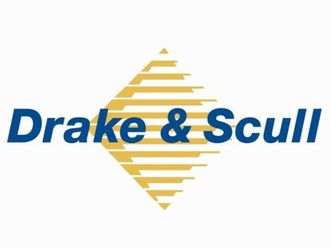Some buyers who wish to acquire a freehold property being developed by any of the three developers — Emaar Properties PJSC, Nakheel LLC or Estithmar Properties LLC (developers of the Jumeirah Beach Residence) — may need to access mortgage finance for the property.
In this context, the recent launch of mortgage finance products in the UAE by a number of commercial banks and a dedicated mortgage finance company, Tamweel, is excellent news. However, from the borrower's perspective, it is worthwhile to examine one important facet of this namely the interest rate risk.
All mortgage lenders in the UAE these days offer Adjustable Rate Mortgages (ARMs). In ARMs, your interest rate is made up of the reference rate plus a margin. Typical reference rates are the London Inter Bank Offer Rate (LIBOR), the Emirates Inter Bank Offer Rate (EIBOR) or the Dubai Inter Bank Offer Rate (DIBOR). The margin is measured as a percentage. Hence a bank could quote the rate as 'DIBOR + 4.99 per cent'. Currently, the banks offering mortgage finance in Dubai charge interest rates that are similar to the above structure with one bank using the US Federal Reserve rate and another bank using DIBOR as the reference rate. For most of the above banks, the effective interest rate works out to approximately 6.5 per cent per annum. If the reference rate were fixed, you'd end up paying 6.5 per cent per annum for the full term of the mortgage.
However, there are a couple of snags here to watch out for:
Firstly, although the margin is normally constant, the reference rate (e.g. LIBOR) is not a constant figure throughout the term of a mortgage. Hence the interest rate is not fixed and varies during the mortgage. Although the borrower of an ARM gets the benefit of lower interest rates when the reference rate decreases, the borrower also pays higher interest if the reference rate increases.
Growth signs
Secondly, and more importantly, for the past several years, the interest rates worldwide have been declining with lower mortgage rates. This was a result of the recession in the US and Europe wherein the central bankers slashed interest rates to revive growth. As a result, the US Fed rate is at a 45 year low of one per cent and rates can't really go down much further (there is no negative interest!). Also, there are signs of growth in US and Europe. Although the Federal Reserve recently stated that interest rates will not be raised for a 'considerable period' (since unemployment is still at a relatively high 6 per cent, inflation is still very low and the US economic recovery is riding on the back of low interest rates), it will not be long before rates are hiked, especially if the US Government decides that the dollar's free fall against the euro has gone far enough. When this happens, it is possible that LIBOR and other reference rates will increase and you may end up making higher mortgage payments.
This is the interest rate risk and this risk may be significant in monetary terms. There are several possible solutions to this issue.
One option is to shop around for Fixed Rate Mortgages (FRMs). As the term indicates, the rate is fixed irrespective of changes in the reference rate. Of course, the downside is that you'd end up paying the higher rate in case the reference rates drop but this is not very likely in the short to medium term. However, my understanding is that the UAE banks are currently offering only ARMs. In addition, most banks will only offer FRMs for a limited period to reduce their own exposure to interest rate risk.
Hence in the UAE, we are left with four options:
Go for the ARM right away but then refinance the loan with a FRM after say three years. Refinance means that a new loan is obtained from another bank with a fixed rate. This new loan is used to close the old loan. As a result, from year 3 (or whichever year you choose to refinance), you end up paying a fixed rate instead of a floating rate and hence are protected against rising rates.
Flip side
The flip side in such a strategy is that most banks charge a penalty if you repay the loan before the term, although one might think that they should be glad to get their money back faster! Currently, depending on the bank, the penalty ranges from 1 per cent to 5 per cent of the amount prepaid. Some banks charge either no penalty or only charge a nominal amount (e.g. Dh1,500) if you prepay after say three years. If you foresee a prepayment due to any reason, it will be wise to check up the timing and amount of penalty which each bank charges before finalising the loan decision.
The second option is to reduce the loan to the maximum extent possible. Although the UAE banks currently give a maximum of 80 per cent of the property value as loan, you could opt for a lower loan percentage (50 or 60 per cent). The lower the loan, the less your mortgage payments and the lesser your exposure to interest rate risk.
The third option is related to the second. This is to prepay the loan when the interest rates start rising. One additional merit is that the amount prepaid can be reinvested at higher interest rates. So, prepayments provide double benefits — higher returns for the cash surplus and protection against a rise in interest rate.
The fourth option is to borrow from banks that offer ARMs. In the US as well as in the UK and India, banks offer a much wider range of mortgage products. However, the eligibility criteria, terms of finance and risks could be different. For example, a bank in the UK may insist on additional security in the form of property in the UK and you may have to be a citizen of the UK. Also, there may be foreign exchange risk since the loan may be in another currency (e.g. pounds sterling) whereas your income from which you'd repay the loan may be another currency (UAE dirhams for example).
To conclude:
The introduction of mortgage loans in the UAE is a very welcome development. But homebuyers should understand and try to reduce the risk of rising interest rates. In particular, read the mortgage agreement carefully for the interest rate, prepayment and other terms;
There are a variety of risk management strategies. Study all possible options. Keep your eyes open for the introduction of FRMs or similar products in the UAE;
Go for all or some of the above options, as appropriate. For example, you could take 50 per cent of the property value as loan from a UAE bank and still opt to refinance after three years.
The author works as assistant financial controller at Nakheel LLC. The views expressed are his own and do not necessarily reflect the views of Nakheel LLC or this newspaper
Realty Check: Tackling the interest-rate risks in mortgage finance
Realty Check: Tackling the interest-rate risks in mortgage finance












